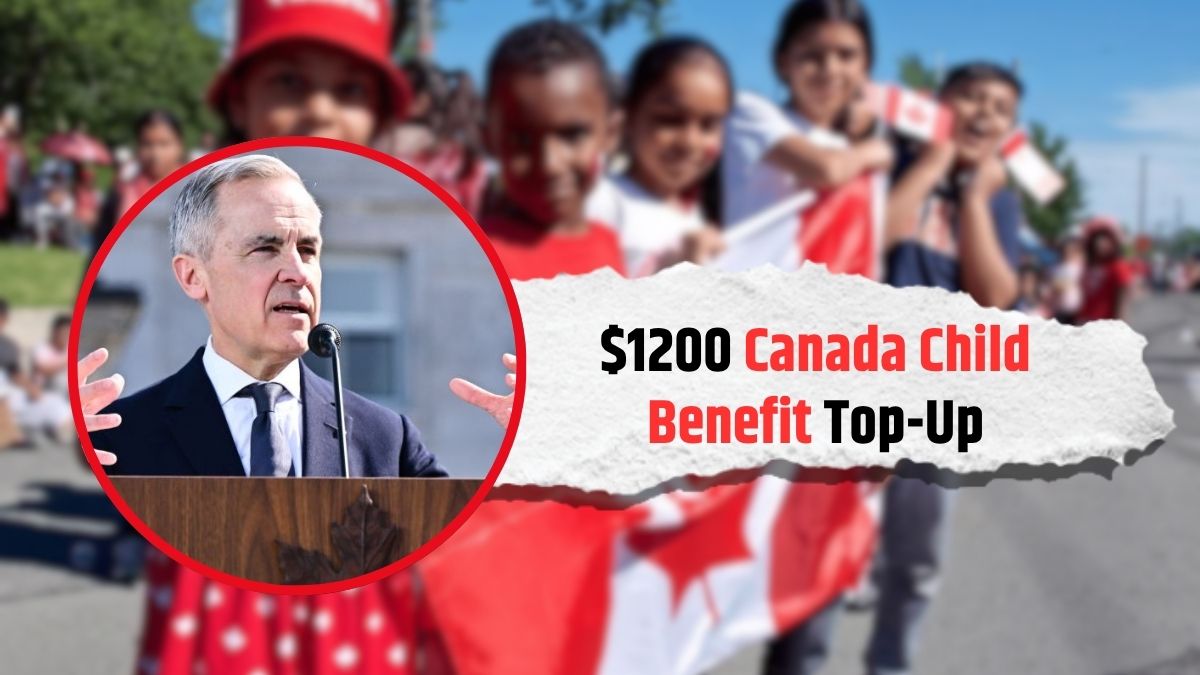Starting July 2025, Canadian families may receive a significant increase in financial support through a newly proposed \$1,200 Canada Child Benefit (CCB) top-up. If approved, this measure would deliver additional relief to millions of families already feeling the squeeze from inflation, rising rent, and childcare costs.
This potential increase was introduced in Parliament and is seen as one of the most impactful enhancements to the CCB program in years. The Canada Revenue Agency (CRA) will oversee the rollout using the same system that currently distributes monthly CCB payments.
Why This Extra Support Matters
Rising prices have made everyday essentials harder to afford for many families. Whether it’s groceries, housing, or school supplies, the cost of living continues to rise. The proposed top-up isn’t just a bonus—it’s a strategic policy response to help lower- and middle-income families stay afloat.
This payment would directly address childcare affordability and help close the gap for those hit hardest by Canada’s economic pressures. It’s designed to improve household stability while reducing the risks associated with financial insecurity.
Who Will Qualify for the \$1,200 CCB Top-Up?
The eligibility rules for the proposed \$1,200 top-up are nearly identical to those already in place for the regular CCB. To receive the additional amount, families must:
- Have at least one child under the age of 18
- Be residents of Canada for tax purposes
- File their annual 2024 tax return
- Meet the CRA’s income thresholds
This benefit is structured to be income-tested. Lower-income households will receive the full \$1,200 per child per year, while families with higher incomes may receive reduced amounts or none, depending on their annual earnings.
Breaking Down the CCB Increase (How It Compares)
The proposed \$1,200 top-up will be added on top of existing CCB payments. This is not a replacement or a separate program—it’s an enhancement to the current system.
| Component | Current Amount (2024–2025) | Proposed Top-Up (2025) |
|---|---|---|
| CCB (Child under 6) | Up to \$7,437/year | No change |
| CCB (Child 6–17) | Up to \$6,275/year | No change |
| New Top-Up Amount | N/A | Up to \$1,200 per child/year |
| Distribution Frequency | Monthly | Monthly or quarterly (pending) |
Families do not need to apply separately for the top-up. If the legislation passes, payments will be added automatically to eligible families’ CCB payments.
Government’s Goal: Fight Inflation, Support Kids
With Canada’s inflation rate at 3.4% as of mid-2025, the federal government aims to ensure that families are not left behind. Essentials like housing and groceries are consuming a larger portion of household income, especially for those with young children.
According to Statistics Canada, over 1.2 million children currently live in food-insecure households. This proposed top-up is part of a broader plan to fight child poverty and promote healthy child development by ensuring all children have access to basic needs.
When Will the Top-Up Arrive?
If passed, here’s the expected timeline for the \$1,200 CCB top-up:
- Parliamentary vote: Scheduled for late August 2025
- First payments: Could begin as soon as October 2025
- Distribution: Added automatically to CCB deposits
The CRA is already working to upgrade its systems to support the smooth rollout of this benefit. Benefit notices and CRA letters will include clear explanations if the change becomes law.
Tax Filing Is Essential—Don’t Miss Out
One of the most important steps families can take is to file their 2024 income tax return. The CRA uses this information to calculate both your regular CCB and the proposed top-up.
Failing to file your taxes could mean:
- Delayed payments
- Receiving reduced amounts
- Losing eligibility altogether
To receive the maximum benefit, families should ensure that all required tax information is submitted on time and that their contact and banking details are updated with the CRA.
A Much-Needed Boost for Canadian Families
The \$1,200 CCB top-up could bring a real and lasting impact to households across Canada. From covering the cost of food and rent to supporting education and childcare, this payment is more than just a financial handout—it’s a lifeline for families striving for stability and growth.
If approved, this will be a game-changing development in Canada’s approach to family financial assistance, especially during a time when every dollar counts.






